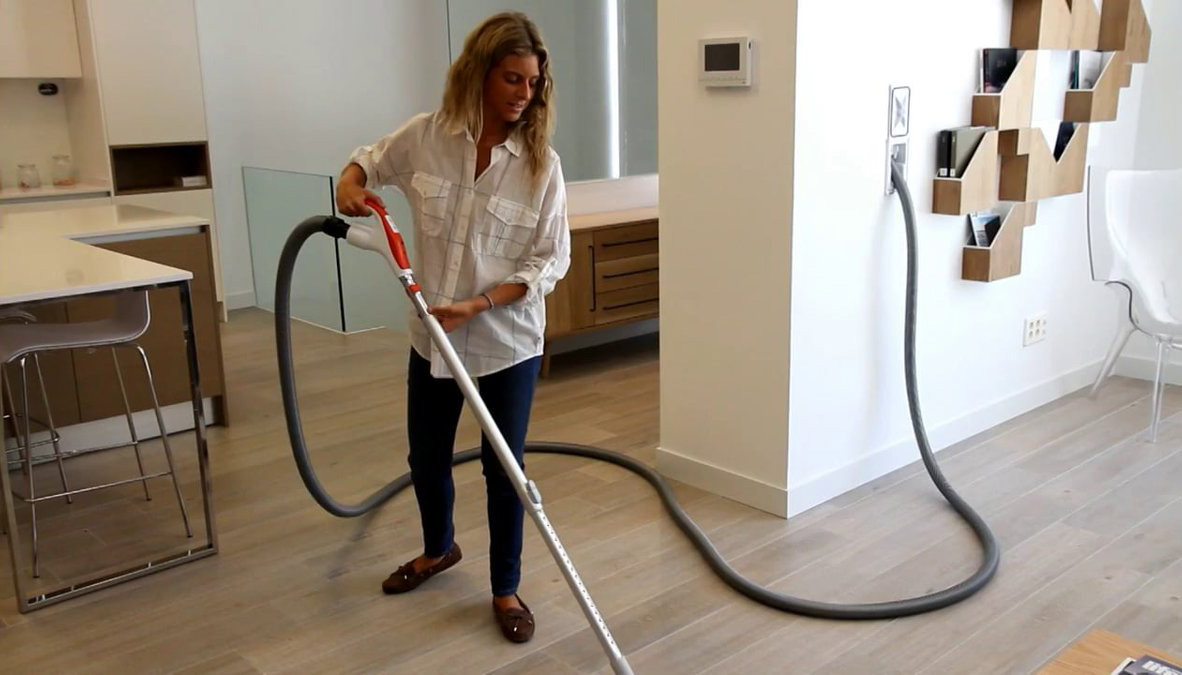Central Vacuum FAQ
FAQ’s on Central Vacuums
We have compiled a list of frequently asked questions on Central Vacuums for you to read.
Can a central vacuum be fitted into existing homes?
Yes. It is possible but allow for some disruption and redecorating after the installation, A 52mm pipe connects to the unit to every wall outlet. These can be installed:
- underneath floorboards
- in existing soil-pipe boxing
- within boiler or airing cupboards
- behind the bath
- underneath kitchen units
- in the loft
- in basement areas
- outside
The possibilities are endless. With little mess or costly alterations, the installation can be completed in less than a day. It is so easy that many people purchase DIY kits. Any property using natural voids and spaces will have no mess, no disturbance and there are no costly alterations.
Where is the vacuum appliance usually installed?
A central vacuum unit can be installed almost anywhere in the home. The most common areas are:
- Inside a garage
- In a utility room
- In an easily accessible loft
- The basement
- Under stairs cupboard
- Vented cupboards
- A loft space is suitable if there is no other suitable position, but performance will be affected
How many vacuum points will I require?
On average, one centrally placed vacuum point should cover approximately 500sqft and as a result, a typical four-bedroom house would only require two points upstairs and two points downstairs. However, depending on the layout, larger houses will obviously require more points and the system should be individually designed.
We recommend that you use an 8-meter hose to provide an easy to use system and you can either determine the number of wall inlets by
- Measuring each room insuring that an 8-meter hose will reach all areas
- Using the relationship of 50m2 for each inlet. Based on the home square footage used above, divide that value by 50. Always round up for estimating purposes. For example, using a 280m2. home: Home Size of 280 / 50 = 5.6. Round up to 6 inlets.
Based on your interior decor, you can select the colour and style of wall inlets that most suit your needs.
What starts the central vacuum system?
A Low voltage wire (safe for kids) runs with the pipework to each inlet and the central vacuum unit is activated once the hose is inserted into any vacuum point and the on/off button is pressed on the hose handle. Pushing the toe switch on the vac pan will also activate the appliance.
Will the vacuum system get blockages?
No blockages should happen if used under normal conditions and installed correctly: a sharp 90 bend fitted behind each wall inlet/point, acts as an anti-blocking device, rather like the u-bend under a sink. Additionally, the wand and hose are narrower than the pipework, ensuring only debris smaller than the pipework goes into the system.
How much will a central vacuum system cost?
A DIY kit for a typical four-bedroom home can be around £700 including VAT and delivery, so as a whole house built-in system, it is surprisingly inexpensive. If you are installing into a new build property, the vat can also be reclaimed making it even cheaper.
Guarantee
Sachvac Central Vacuum Units come with a five-year parts warranty.
Do you have more questions on Central Vacuum Systems? Call our sales and technical team on 028 2827 5150 or email info@bpcventilation.com


